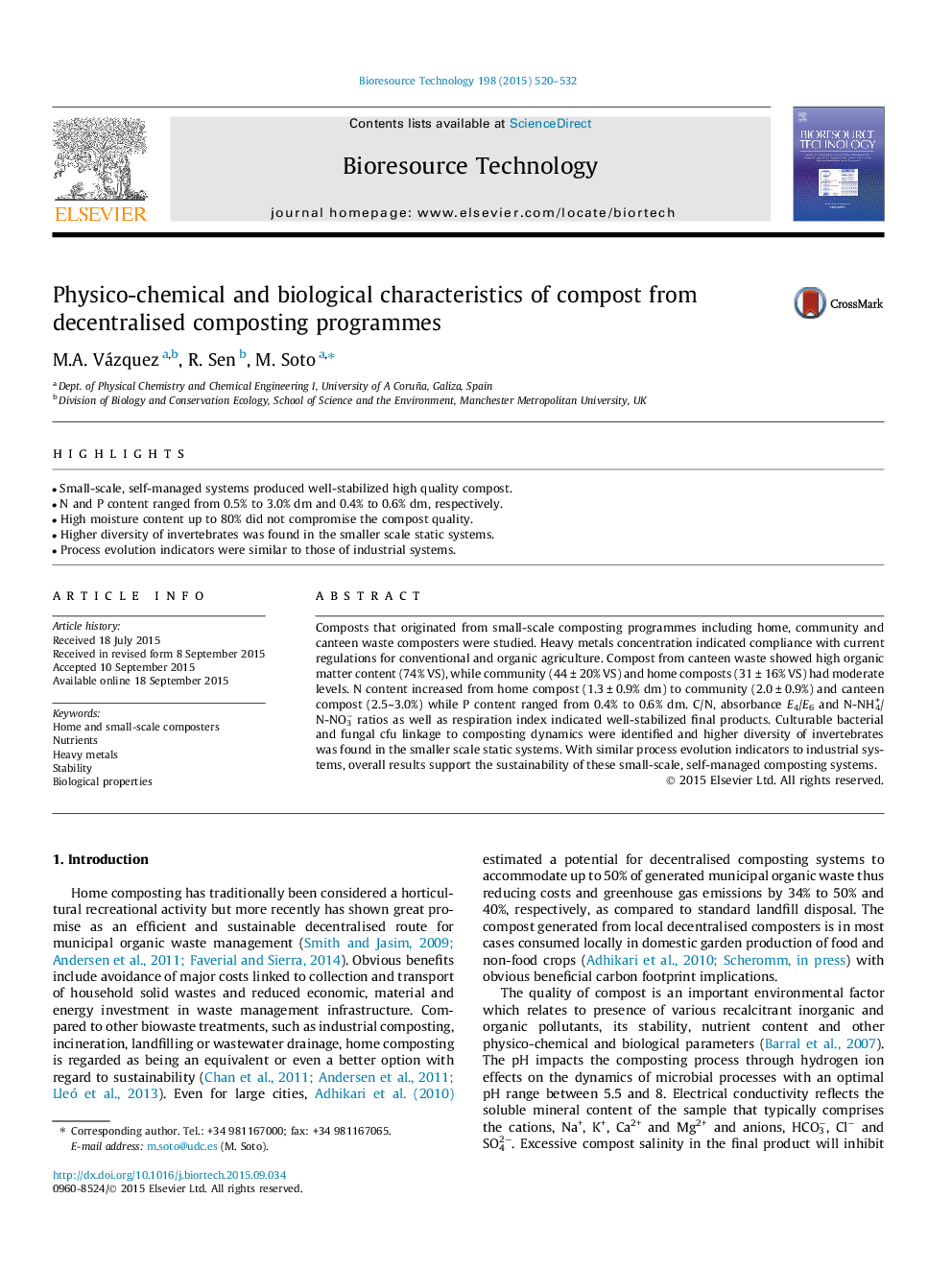| Article ID | Journal | Published Year | Pages | File Type |
|---|---|---|---|---|
| 679453 | Bioresource Technology | 2015 | 13 Pages |
•Small-scale, self-managed systems produced well-stabilized high quality compost.•N and P content ranged from 0.5% to 3.0% dm and 0.4% to 0.6% dm, respectively.•High moisture content up to 80% did not compromise the compost quality.•Higher diversity of invertebrates was found in the smaller scale static systems.•Process evolution indicators were similar to those of industrial systems.
Composts that originated from small-scale composting programmes including home, community and canteen waste composters were studied. Heavy metals concentration indicated compliance with current regulations for conventional and organic agriculture. Compost from canteen waste showed high organic matter content (74% VS), while community (44 ± 20% VS) and home composts (31 ± 16% VS) had moderate levels. N content increased from home compost (1.3 ± 0.9% dm) to community (2.0 ± 0.9%) and canteen compost (2.5–3.0%) while P content ranged from 0.4% to 0.6% dm. C/N, absorbance E4/E6 and N-NH4+/N-NO3− ratios as well as respiration index indicated well-stabilized final products. Culturable bacterial and fungal cfu linkage to composting dynamics were identified and higher diversity of invertebrates was found in the smaller scale static systems. With similar process evolution indicators to industrial systems, overall results support the sustainability of these small-scale, self-managed composting systems.
